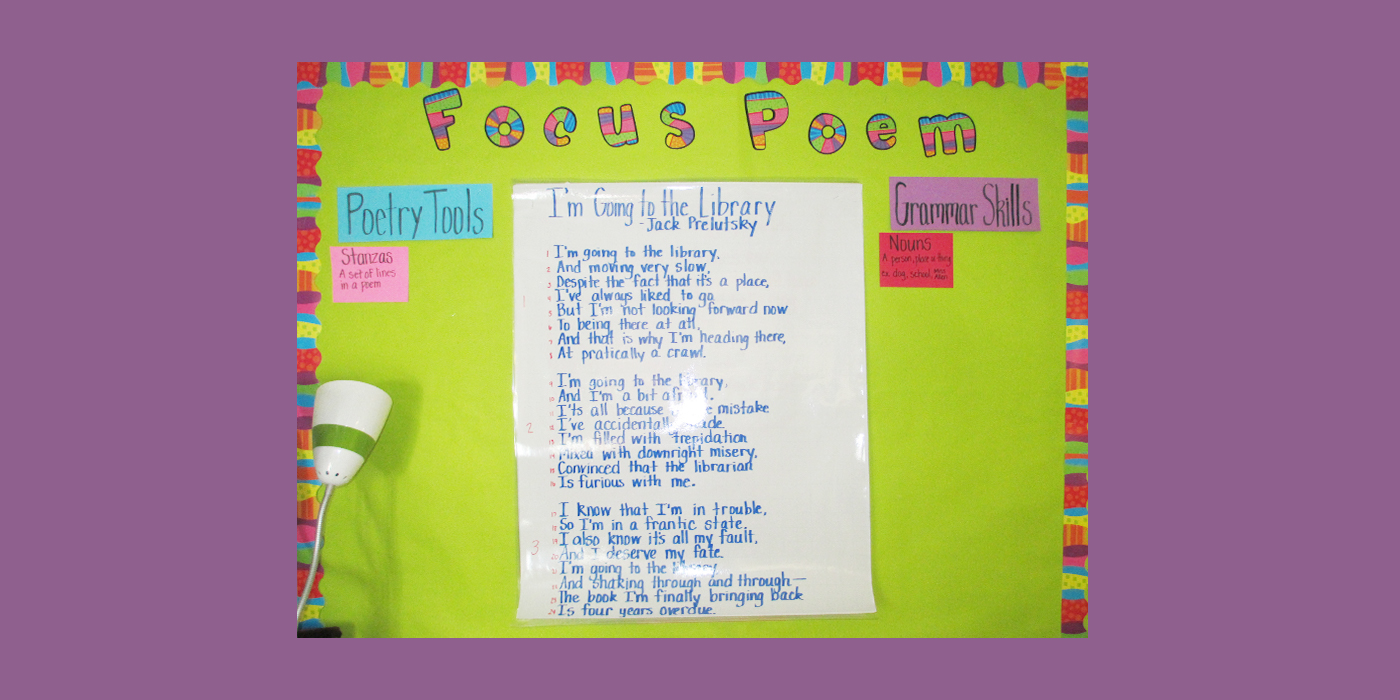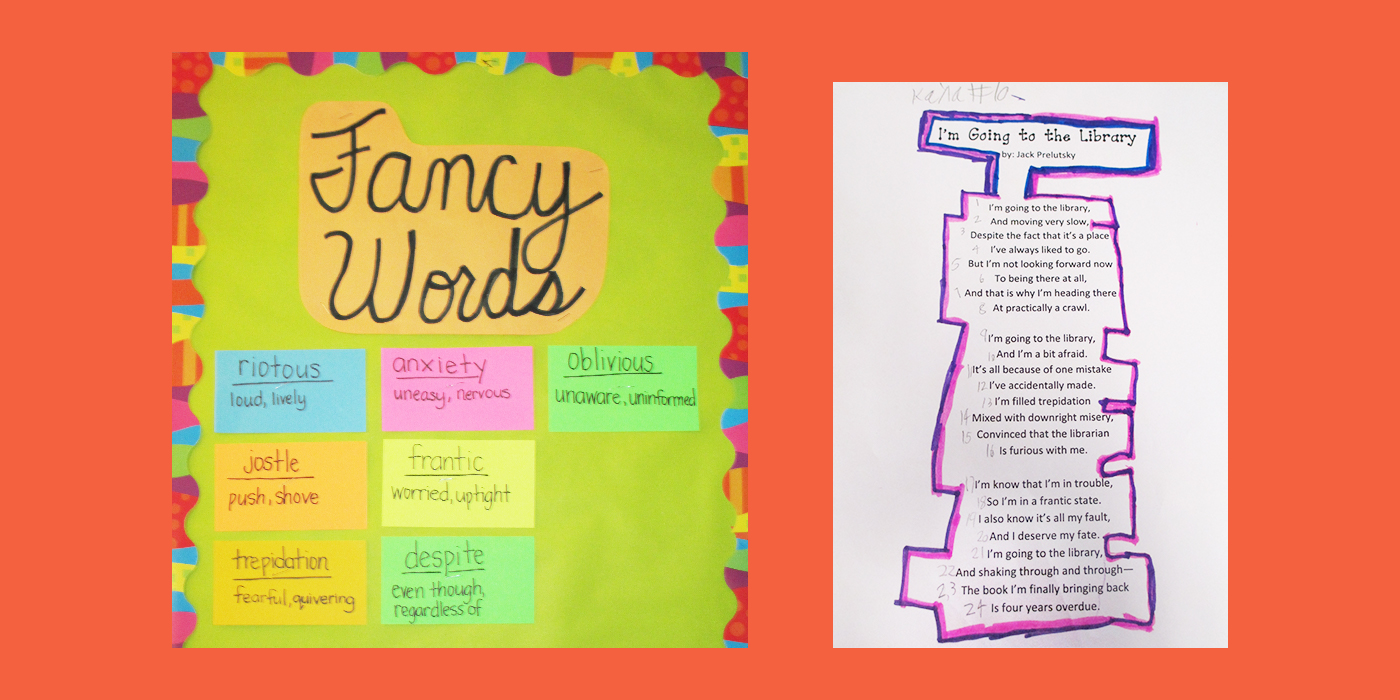April is National Poetry Month, but students need access to poetry all year long! Poetry is unlike any other genre of literature and many of the literary devices that are specific to poetry can boost students’ creativity when writing other genres, like fiction, come alive when put to use.
Focus Poetry is a technique of shared reading that provides multiple opportunities to teach a wide variety of skills in a small amount of time each day. When elementary educator Julie Ballew incorporated poetry lessons into her daily schedule, her students gained a deeper understanding of how to read and write poetry.
To transform your own students into poetry pros, learn how to implement this structure in your classroom. In only a few minutes per day, your students will build the skills to read, analyze, and understand poetry.
Set Up Your Wall Space
First, you will need some wall space that you can dedicate to poetry. It will need to be large enough to accommodate the following elements:
A poem, written or typed, large enough for everyone to read
A list of poetry skills (to grow all year long)
A list of grammar skills (to grow all year long)
A list of new vocabulary (to grow all year long)
Decide Which Skills You Need to Teach
Take a look at your standards, whether they are local, state, or Common Core. What poetry skills are students expected to learn this year? Decide which skills you want to prioritize. Next, search your standards for grammar and/or conventional skills that your students are expected to learn and add the relevant ones to your list.
Make a chart of the standards you want to cover in your poetry lessons with space to mark off the dates the skills were covered to keep track of your progress. Examples of skills that your class may need to learn in their poetry lessons include:
Identify and use playful language (tongue twisters, palindromes—which are words or phrases that are read the same backwards as forwards—and riddles)
Describe characteristics of various forms of poetry (narrative, lyrical, humorous, free verse)
Identify multiple meaning words/homographs (or, two words that are spelled the same but that don’t necessarily have the same meaning or pronunciation)
Use context clues to determine the meaning of unfamiliar words
Read with accuracy and fluency
Choose and Chart Your Poem
Once you know what skills you want to teach, it becomes easier to narrow down your list of poems. For example, if you have chosen to study prefixes and line breaks this month, you can search your poetry books for poems that best exemplify these conventions.
Write your chosen poem on a large piece of chart paper and make sure the words are big enough that they can be read by the whole class. You will also need to have a smaller version of the poem to give to each student at the end of the week. As the year goes on, they will collect each week’s poem and build a poetry anthology of their very own!
Plan the Week
Teaching poetry works best when there is a predictable structure. Each poem can be studied for one week and the daily activities should stay the same. Here is one suggested schedule for how to structure your week:
Monday: Read the poem together and discuss the author’s purpose and the meaning or theme. This initial comprehension work sets up students to study the poem more closely the rest of the week.
Tuesday: Read the poem together and discuss key vocabulary words. Write these words on note cards so you can add them to the vocabulary list.
Wednesday: Read the poem together and discuss a grammar skill found in the poem. This could be anything from prefixes to commas. Write the skill on a note card so you can add it to your wall list of grammar skills.
Thursday: Read the poem together and discuss a poetic device (stanzas, line breaks, rhyme, alliteration, etc.) found in the poem. Write the skill and a brief definition on a note card so that you can add it to your wall list of poetry skills.
Friday: Read the poem together and have students respond to it orally or in writing. You can lead a discussion about inferences they are making or give them a copy of the poem so they can highlight the rhyming words or draw a picture of how it makes them feel.

